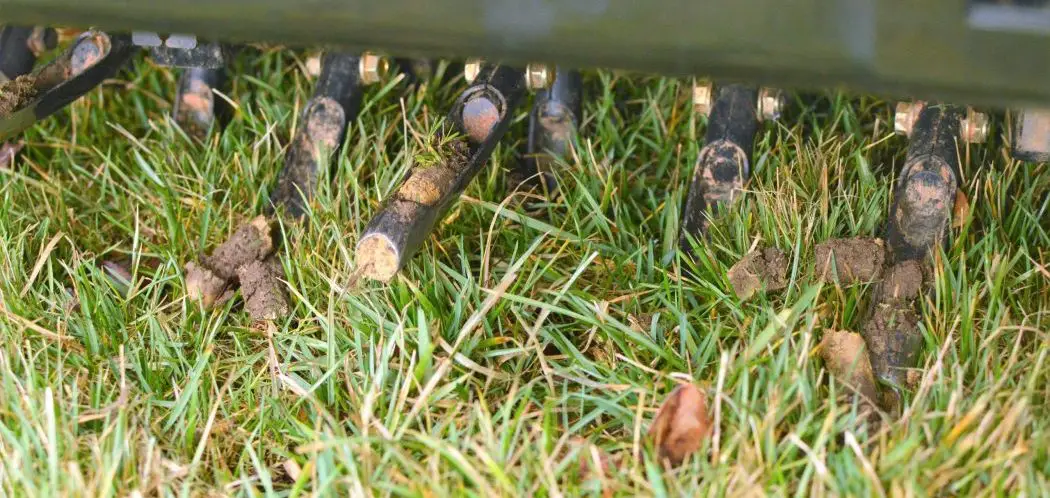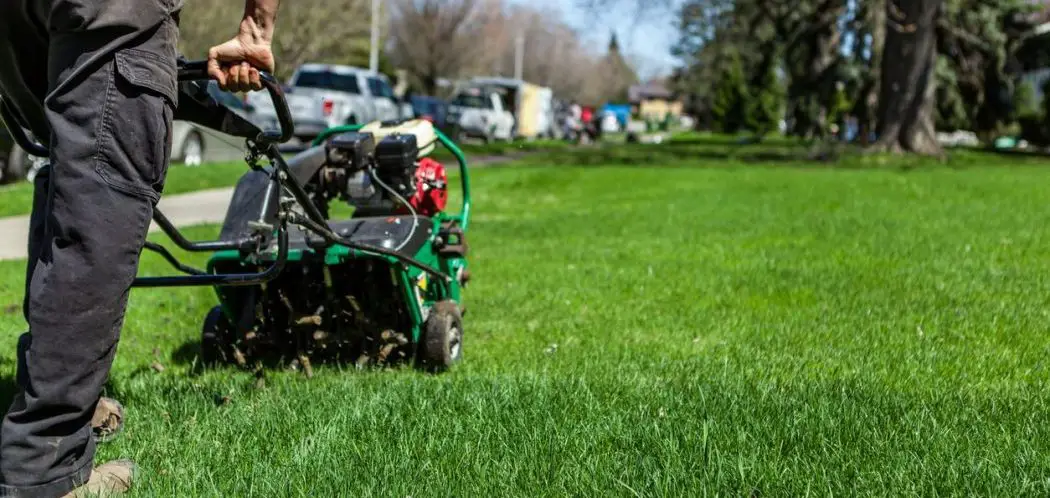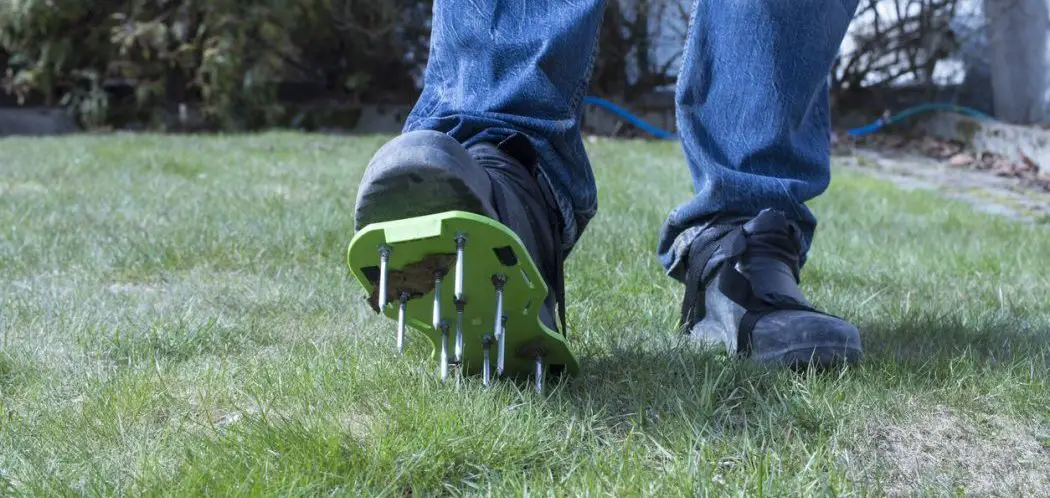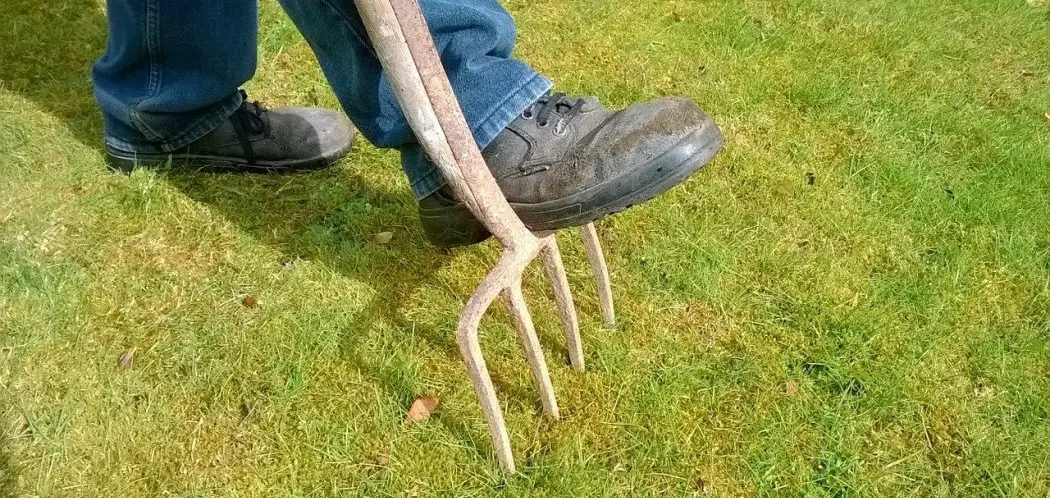People don’t often think about the condition of the soil in their yard, yet there are times when the condition of the soil can actually cause the grass to look dull and not grow and thrive the way that it’s supposed to.
You likely won’t notice the soil itself when this happens; however, that could very well be the reason why your grass doesn’t look so good. This is because the soil on your lawn can become compacted over time and when it does, air and nutrients won’t make it through as they should. And it doesn’t take a lot of compacted soil to make this happen. Even soil that is compacted 1/4 to 1/2 inch can cause it to take in less nutrients and air.
Aerating the lawn twice a year is usually appropriate for heavy clay soils which tend to compact easily. For those with sandier soils, aerating once per year should be sufficient. Areas that receive a lot of foot traffic may need to be aerated more frequently.
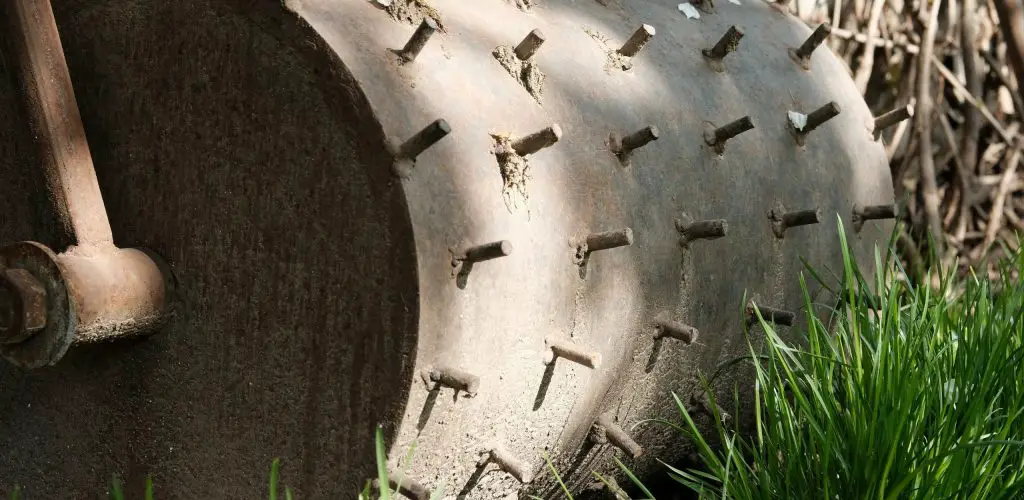
Consequences of Not Aerating
The longer your soil is compacted and the thicker the compacted soil is, the less air, water, and nutrients will get into the blades of grass, which not only kills the grass eventually but can also cause it to look lifeless, turn yellow, and not grow as long or as thick as it should.
Compacted soil essentially kills the blades of grass slowly over time, so the sooner you can do something about it, the sooner you can save the grass and make it healthy again. This compacting happens because kids play on the grass, people walk on it, and sometimes cars park on it. All of these things contribute to this condition and wreak havoc on the grass itself.
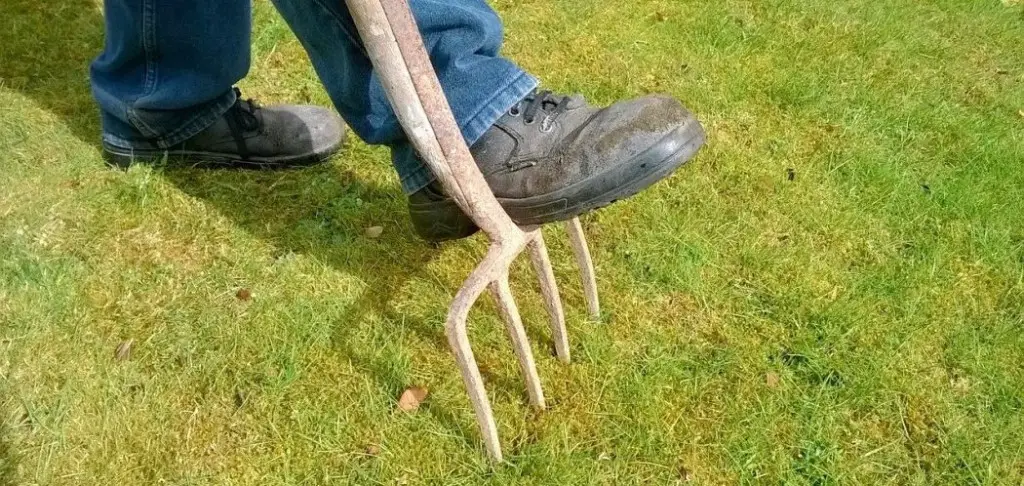
Is it Necessary to Aerate More Than Once a Year?
Aerating a lawn essentially allows the compacted soil to loosen up a bit so that air, water, and nutrients can get into it and make the grass thrive again. Even one aeration can make a big difference and cause your grass to perk up and become thicker, greener, and much healthier overall.
Compacted soil can eventually cause the grass to die if it’s severe enough, so a good periodic aeration can literally save your grass by not allowing it to starve and die.
With some exceptions, aerating only once a year is fine and should keep the soil and grass nice and healthy. If you have a cool-season lawn and live in northern states, aerating in the early fall or early spring is a good idea.
Warm-season grasses typically found in southern states should be aerated in late spring or early summer before it gets too hot. If your soil is very dry or very wet, it’s best to wait to aerate it. When you aerate your lawn, it should be damp but not soaking wet. Waiting until a day or two after a rain is a perfect time to aerate your lawn. Never aerate when it’s overly dry simply because it is far too difficult to do so.
There are three main types of aerators:
- Spike aerators, which poke holes in the ground
- Slicing aerators, which have rotating blades that cut or slice the soil in the ground
- Core or plug aerators, which have rows of hollow tines that remove plugs of soil and then redeposit them so they can dissolve, and are used mostly by commercial companies
To aerate your lawn, you can either buy or lease equipment that helps get the job done, or you can hire a company to do the job for you. Either way, the process is usually simple, fast, and inexpensive.
Can You Over-Aerate?
The simple answer to this question is yes, you can over-aerate your lawn. If your lawn is healthy, aerating once a year is enough to keep it healthy. If you have a lot of compacted soil and thatch, you can aerate it twice a year. This may not sound like a lot for unhealthy soil, but if you aerate more than once or twice a year, it can actually damage the soil.
And if you’re curious about how to tell if your soil needs aerating, just look for the following telltale signs:
- Plants that have stunted growth
- Puddles of water found in various places
- Soil that has a reddish tint
- Spots that are either bare or filled with yellow, patchy grass
- Water that runs down from high areas
Yearly (or twice-yearly) aeration is important, but don’t aerate more than twice a year regardless of the condition of your lawn. If you do, the soil can become damaged because of the “too much of a good thing” rule.
Consequences of Over-Aerating
If you over-aerate your lawn, the soil can become damaged because it won’t absorb the right amount of nutrients and water. The soil may not react to rain, mowing the lawn, and grass nutrients like it should. Without the proper absorption, the grass won’t grow and thrive as it should.
That being said, it is actually rather difficult to over-aerate your lawn. In fact, many people with lawns that are extra compacted will aerate their lawns three to four times a year without any problems. No more than twice a year is still recommended, of course, but you shouldn’t worry if you inadvertently aerate more than one or two times a year, as you still shouldn’t have any problems with your soil.
When Should You Aerate?
Learning when to aerate your lawn is rather simple. As a general rule, the soil should never be too wet or too dry, so if it rains, wait two to three days to aerate the lawn.
You should aim for aerating right before your grass reaches its natural growth peak time.
If your lawn is dormant, it should not be aerated. If you’re not sure if your grass needs to be aerated, simply take a screwdriver and insert it into your soil. If it slides in easily, your lawn is fine and doesn’t need aeration. If there is any resistance at all, it is time to aerate.
And always pay attention to the information listed above, which will depend on where you live and what type of grass you have: early fall or early spring if you live up north, and late spring to early summer if you live in the south.
The Best Aerators I’ve Reviewed
Agri-Fab Tow Plug Aerator
This is my absolute favorite aerator as a tow-behind option. The knives penetrate the soil and pull really nice cores that are 3 inches long! Check out what this is going for on Amazon right now.
Yard Butler ID-6C Manual Lawn Coring Aerator
I really like this tool for manual work. It works great for small yards and those areas which a large aerator can’t get to. You can pick one up right here on Amazon.
More Helpful Resources
- What To Do After Aerating Your Lawn – A useful guide on the steps to take after aerating your lawn.
- Lawn Aerator Types 101: A guide to the different styles – A comparison of all the different styles of aerators.
- Should You Pick up the Plugs After Aerating? – Ever wondered if you should pick the plugs up after aerating? Find out here
- Should You Buy Or Rent A Lawn Aerator? – Would you be better to rent a lawn aerator rather than buying one? This post walks you through what you need to know.
- Do hand aerators work? | should you buy one? – Find out whether hand aerators are good enough to get the job done here!

